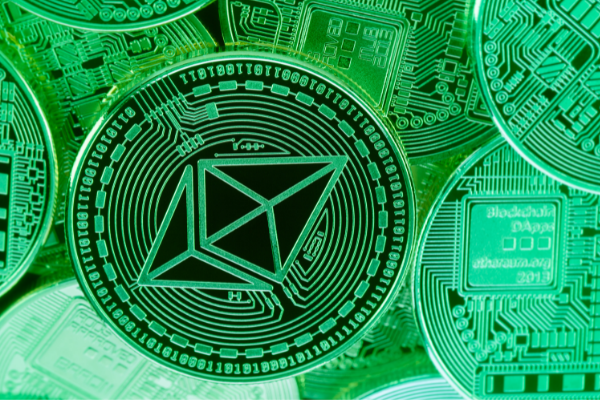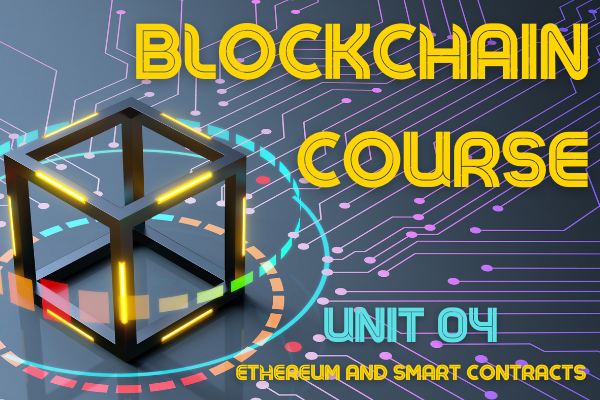Table of Contents
Ethereum is the second most important network in the world of cryptocurrencies and Blockchain, only after Bitcoin. Ethereum was created with the intention of improving some limitations of Bitcoin, which as we have seen so far, is essentially just a decentralized monetary system, and thus taking Blockchain technology and decentralization to another level. Like Bitcoin, Ethereum supports a peer-to-peer node network, meaning it is essentially a decentralized server managed by a large number of computers without a central administrator or middleman.
There is a common misconception that often occurs in people new to cryptocurrencies, and that is to believe that the name Ethereum is what the coin is called, when it really belongs to the network. Nodes are rewarded in Ethereum’s native currency called Ether (ETH) and the cost of operations is calculated in Gas.
The Ethereum network was invented by Vitalik Buterin, a young Russian-Canadian programming prodigy. In his whitepaper, which was released in 2013, he describes Ethereum as a “Blockchain-based decentralized mining network and software development platform all in one.”
What Vitalik intended by creating the Ethereum network was basically to extend the idea of the Bitcoin contract protocol, but with a much more ambitious idea with the goal of facilitating the development of a complete ecosystem for open decentralized applications called “dApps” and smart contracts to build and run while eliminating the risk of third-party interference.
Before the Ethereum network was launched in 2015, anyone who wanted to create a Blockchain-based application had to build their own Blockchain platform from scratch. But with Ethereum, developers can leverage its network infrastructure to create virtually any application imaginable.

Lack of scalability
The Ethereum and Bitcoin platforms rely on a peer-to-peer network of nodes, and both use mining incentives to motivate them to grow or maintain those nodes on their platform.
As a public Blockchain, the Ethereum network aims to support as many users as possible. However, Ethereum runs on the same proof-of-work (PoW) protocol as Bitcoin, which means that computational power is needed, not only to produce new coins but also to process transactions and keep the entire ecosystem moving. This responsibility placed on each node becomes a problem as the Ethereum network attempts to grow or scale. Scalability is simply the ability of a network to grow in size and manage the increased demand. For the Ethereum Blockchain network, each node contains the complete transaction history and updated ledger for account balances and contracts. As new blocks of transactional information are created, all nodes must store and update, which can cause serious issues with network speed.
While scalability now represents a common headache for Blockchain developers, the problem was first exposed on Ethereum Network in 2017 when a dApp for creating crypto virtual cats called Cryptokitties, became a viral success and crashed the entire network with more transactions than it could take on. The popularity of Cryptokitties caused the app to go from 1 million in transactions to 3 million in transactions in the space of one day, representing 20%, at the time, of all transactions on the network. In addition to the network losing speed dramatically, another effect was a significant increase in the price of transactions.
Before we look at how Ethereum plans to evolve to solve this scalability problem, we need to focus on a concept that has already come up several times and that was another reason why Ethereum revolutionized the Blockchain, smart contracts.
In 1996, Nick Szabo, whom we have mentioned at the beginning of the course, analyzing the structure and functioning of the ledger, observed that it could also be used to include smart contracts or also called Blockchain contracts. These contracts could be transformed into computer code, stored and replicated on the network while being monitored by the nodes of the Blockchain itself. Similarly, it would also result in ledger entries, as does transferring money, receiving a product or service.
So, what is the role of smart contracts? Smart contracts will help us to exchange products, goods, services or anything else that has value in a transparent and conflict-free way, avoiding having to introduce an intermediary in the operation as we have had to do so far.
For example, if you need to do any administrative procedure in a notary’s office, you would have to go to the place and wait for a lawyer or notary, pay them and wait again to finish the management of any document. With smart contracts, it would be like going to a vending machine, inserting your digital currency and getting the document instantly, automatically associating it with your account.

Similarly, smart contracts, apart from being the ones that define the terms of an agreement and the penalties around it as a traditional contract does, also enforces those obligations automatically.
For example, let’s imagine we need to sell a house. It’s a fairly long and tedious process that requires a lot of paperwork and talking to different companies and people. That is why most people who decide to sell a house decide to hire the services of a real estate agency or real estate agent so that they are the ones who take care of acting as intermediaries, taking care of the negotiations, paperwork, showing the property and supervising the whole sale until closing an agreement, freeing us from all that ordeal.
However, all this type of advantages that the real estate agencies or real estate agents provide us are not free, so we will have to subtract a substantial part from the final price of the property, that is to say, we are suffering a financial loss in exchange for obtaining this type of services.
In this type of situation is where smart contracts can really be useful and totally revolutionize an entire industry, while making all processes much simpler. Another thing they solve, which is not unimportant, is the lack of trust in many actors in society. Smart contracts work based on the “If Then” principle, which means, following the example above, that only when the agreed amount is sent to the system the ownership of the house will be transferred to the buyer.
Therefore, smart contracts also perform the function of escrow services, since both the ownership right and the money that will be finally paid for the property will be stored in the system and distributed at the same time to both the buyer and the seller. This whole process is at all times verified by all the member nodes of the network, which act as notaries of the process.
This type of contract eliminates the need for an intermediary because trust between the parties is no longer an issue, there is no need for an intermediary. All the necessary functions that used to be performed by the real estate agency or the real estate agent can be pre-programmed in a smart contract, saving both the seller and the buyer a lot of money.
We already know what a smart contract consists of and what advantages it has over traditional contracts, however, none of this would be of any use if the scalability of the network is not improved since, if smart contracts have a massive adoption, in a short time the whole system would collapse, so a significant improvement in the base of the Ethereum network is necessary.
This upgrade is already underway and is referred to as Ethereum 2.0 (Serenity). Starting in late 2019 and early 2020, Ethereum 2.0 is focusing on fixing the underlying problems of the Blockchain platform.
Currently, one of Ethereum’s most burning issues is limited scalability. Compared to payment giants like Visa and Mastercard that can process around 60,000 transactions per second while Ethereum’s network only has the capacity to process 15. As a possible solution, Ethereum developers will create a new blockchain alongside the current one to introduce new updates.
One of these important updates is sharding, a process that divides data processing among multiple nodes, allowing for parallel transactions, information processing and storage, a new cryptocurrency (ETH2).
Ethereum 2.0 will also feature the implementation of the PoS (proof of stake) consensus algorithm, where what matters is whether or not you have coins and how many you have, and a new virtual machine that allows developers to code in multiple languages.
While the fate of the current blockchain (Ethereum 1.0) is still undecided, developers expect Serenity to increase the security, efficiency and scalability of the network by potentially reaching 100,000 transactions per second.




